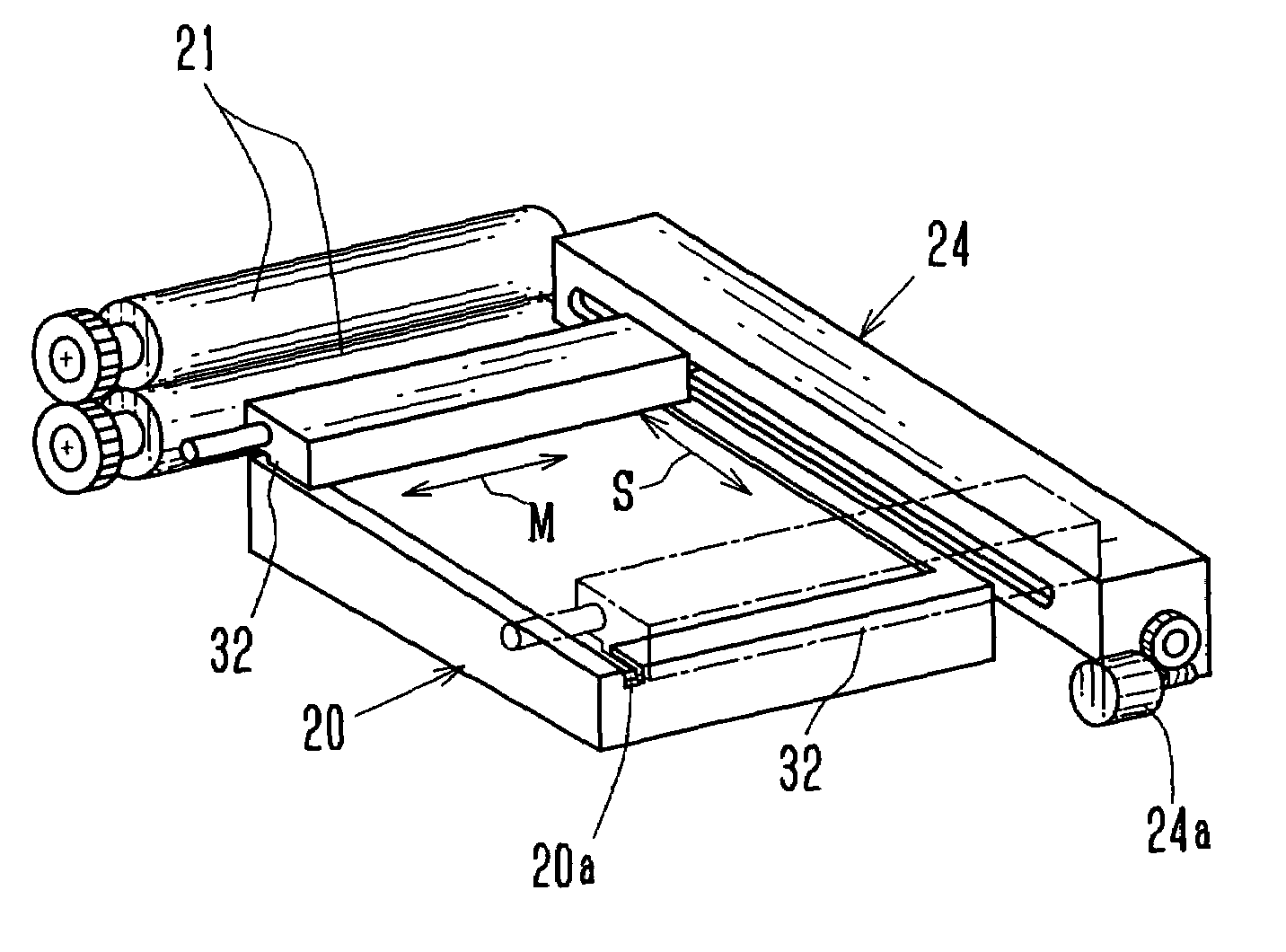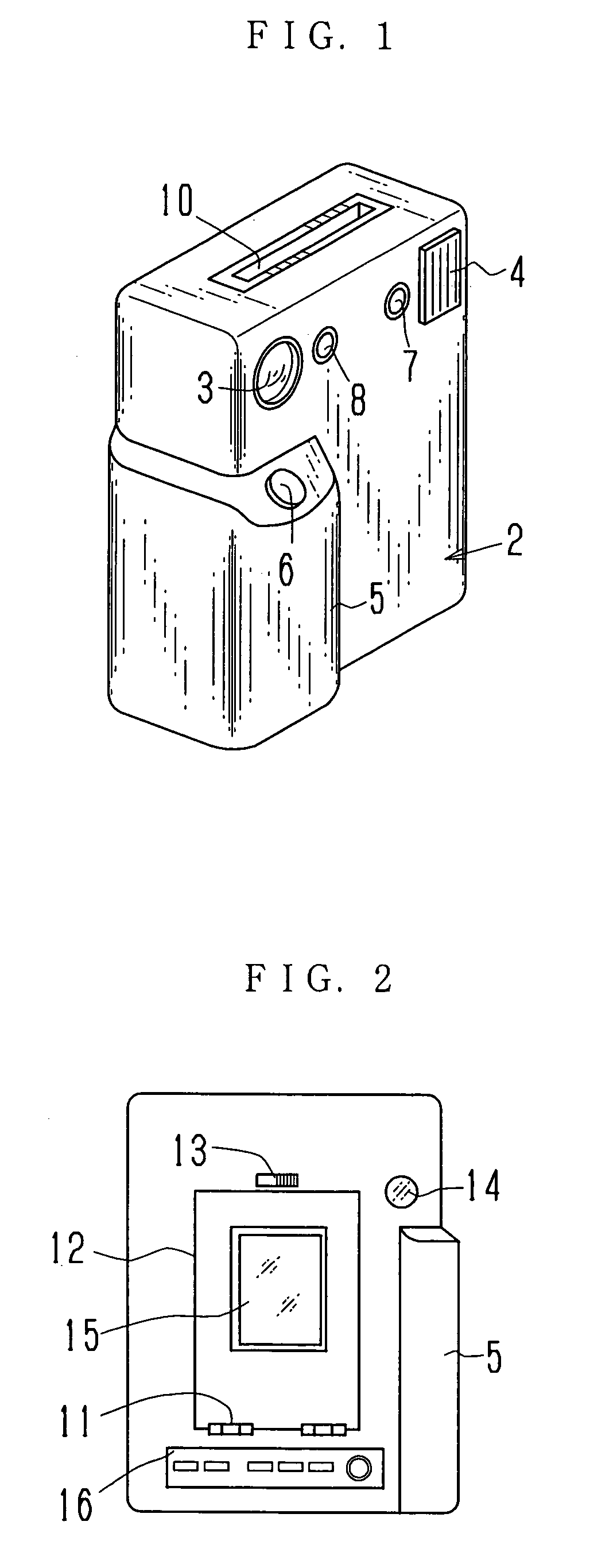Electronic still camera, instant printer and instant film
a still camera and printer technology, applied in the field of electronic still cameras, can solve the problems of large printer body, unhandy carrying around, and large electric consumption of printers, and achieve the effects of low electric consumption, simple electrical construction of printing devices, and confirmation of the quality of photographed images
- Summary
- Abstract
- Description
- Claims
- Application Information
AI Technical Summary
Benefits of technology
Problems solved by technology
Method used
Image
Examples
first embodiment
[0047]The present invention will be described in more detail with reference to the accompanying drawings. In FIGS. 1 and 2, an electronic still camera according to the invention has a camera lens 3 and a flash-emitting window 4 which are formed in the upper front surface of a camera body 2. A shutter release button 6 is located on the top of a grip 5. When the shutter release button 6 is pressed, an image is taken as a photograph through the camera lens 3. On one side of the camera lens 3 are disposed a light projector window 7 and a light receiver window 8 of an auto-focussing device for measuring a subject distance of a subject to be photographed in accordance with a technique of optical triangulation. When the shutter release button 6 is pressed, focusing of the camera lens 3 is accomplished automatically prior to the photography.
[0048]There is a film exit 10 formed as a slot in a top face of the camera body 2. When printing operation is effected, an exposed instant film is eject...
second embodiment
[0081]FIG. 8 shows a front view of an electronic still camera according to the invention. A power switch 70 is located at an upper portion of a camera body 2. When the power switch 70 is turned on, various operation keys are made effective, and the electronic still camera automatically proceeds to an imaging mode for picking up subject images. A camera lens 3 and a flash window 4 are located at upper front portions. A grip portion 5 is provided with a battery chamber lid 74 on its side area, which is opened for exchanging a power source batteries. For example, the power source batteries are four pieces of AA size batteries connected in series.
[0082]A shutter release button 75 is located at a front area of the grip portion 5. Upon the shutter release button 75 being pressed, a still image frame of the subject formed through the camera lens 3 is recorded. As the camera lens 4 is used a pan-focus lens whose depth of field ranges, for example, from 1.2 m to infinity. Therefore focusing ...
PUM
 Login to View More
Login to View More Abstract
Description
Claims
Application Information
 Login to View More
Login to View More - R&D
- Intellectual Property
- Life Sciences
- Materials
- Tech Scout
- Unparalleled Data Quality
- Higher Quality Content
- 60% Fewer Hallucinations
Browse by: Latest US Patents, China's latest patents, Technical Efficacy Thesaurus, Application Domain, Technology Topic, Popular Technical Reports.
© 2025 PatSnap. All rights reserved.Legal|Privacy policy|Modern Slavery Act Transparency Statement|Sitemap|About US| Contact US: help@patsnap.com



